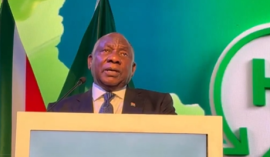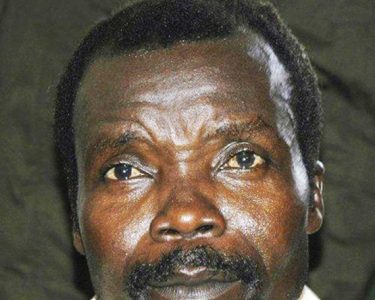
CAPE TOWN, June 13 (NNN-SANEWS) — South Africa’s President Cyril Ramaphosa has called on African countries to seize the opportunity presented by green hydrogen as a catalyst for industrial transformation, energy security, and inclusive economic growth across the continent.
Delivering the keynote address at the inaugural Africa Green Hydrogen Summit at the Century City Conference Centre in Cape Town, he positioned the continent as a key player in the emerging global green hydrogen economy.
“Our beloved continent Africa, the cradle of humanity, is uniquely positioned to become a major player in green hydrogen because it has abundant renewable resources manifested in high solar irradiance, strong winds and hydropower potential.
“The vast land our continent has lends itself to large-scale renewable energy projects. We are therefore perfectly placed to leverage the global shift towards cleaner energy sources for our collective advantage,” the President said.
Originally launched in 2022 as a South African initiative to articulate its national vision, the summit has now evolved into a continental platform to harness Africa’s green hydrogen potential.
Held under the theme: “Unlocking Africa’s Green Hydrogen Potential for Sustainable Growth”, this innovative summit convenes African energy ministers, policymakers, investors, developers, technology partners, and research institutions to shape the continent’s emerging green hydrogen sector.
Ramaphosa noted that over 52 large-scale projects have been announced across the continent, including South Africa’s Coega Green Ammonia project, the AMAN project in Mauritania and Project Nour in Morocco.
The target, as articulated through the Africa Green Hydrogen Alliance (AGHA), is to produce 30 to 60 million tons of green hydrogen annually by 2050.
It is estimated that this could create between two and four million new jobs in alliance member states by 2050.
The Africa Green Hydrogen Alliance brings together a number of African nations, including Egypt, Kenya, Mauritania, Morocco, Namibia and South Africa.
“To make use of these opportunities, we need to establish appropriate policy and regulatory environments. We must continue to move as a continent to develop regional certification schemes, hydrogen corridors and green product export platforms.
“We commend the work of countries like Mauritania, which has taken early steps on certification. It will be critical that we learn from one another and converge on standards that work for Africa,” the President said.
He acknowledged the critical need for regulatory certainty, robust certification systems, and market access, stressing that investment and offtake agreements would be key to unlocking Africa’s green hydrogen future.
“We cannot close that gap with potential alone. We must match it with demand signals, regulatory certainty and project preparation support. We need to ensure that there is sufficient and growing demand. This includes building domestic demand in African countries,” Ramaphosa said.
In this regard, the President noted that the launch of green hydrogen production for mobility in Sasolburg and policy enablers for domestic offtake are important foundational steps.
“As we explore these exciting opportunities, we must work to address the impediments to the growth of this industry,” he said.
President Ramaphosa also highlighted Germany’s continued support through the H2Global mechanism, which has allocated one of its bidding windows to Africa and praised ongoing bilateral cooperation with the EU on green hydrogen projects, including Sasol’s HySHiFT sustainable aviation fuel initiative.
The H2Global mechanism is opening its second bidding window, with one of the four lots allocated to Africa.
“The African lot, which is funded by the German government, will guarantee offtake for successful projects on the continent.
“A Joint Declaration of Intent with the German government focuses on market access, offfake opportunities and value-additive benefits in the production of green steel and green fertiliser. We commend the German government for its commitment to African supply,” the President said.
At home, South Africa is accelerating efforts to localise hydrogen production and industrial use. The country has invested R1.49 billion in its Hydrogen South Africa programme, launched new wheeling regulations, and initiated pilot projects, such as green hydrogen mobility in Sasolburg, and advanced planning for the Coega project.
In addition, the South African Renewable Energy Masterplan has been launched to integrate renewable energy and hydrogen into broader industrial development goals.
President Ramaphosa acknowledged the many challenges facing the sector, including high capital costs, global investment gaps, and stiff competition from fossil fuels but urged unity and urgency in building an African-led hydrogen economy.
“Tempered by these realities, this summit must not only be a platform of ideas. It must be a platform of commitments. We must put the African voice at the centre of global energy rulemaking. We must be authors of our own future,” he said.
South Africa, which currently chairs the G20, has chosen just energy transitions as a key theme for its presidency, placing green hydrogen at the heart of its climate resilience and industrialisation agenda.
“The Africa Green Hydrogen Summit is an important part of that vision. Hydrogen is a bridge to a new export industry for African countries. It is an enabler for Africa’s energy independence and climate resilience,” he said.
More importantly, the President framed green hydrogen as more than an energy source, describing it as an “anchor for industrial transformation and infrastructure investment”.
“We are called upon to join hands to build this bridge together as Africans, as partners and as builders of a green, prosperous and inclusive future,” the President said. — NNN-SANEWS




